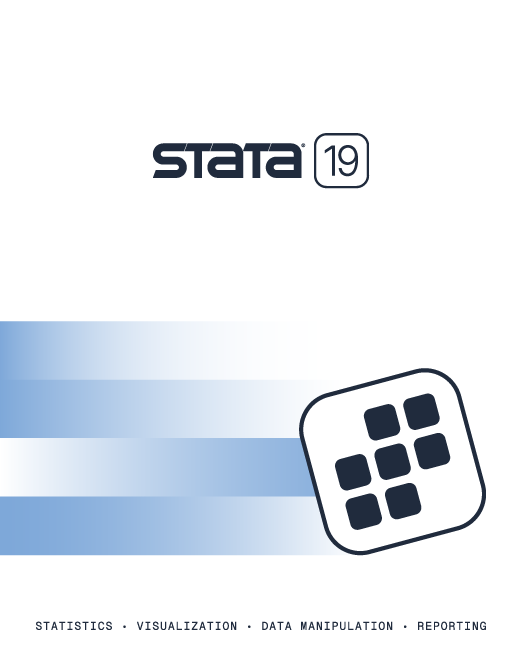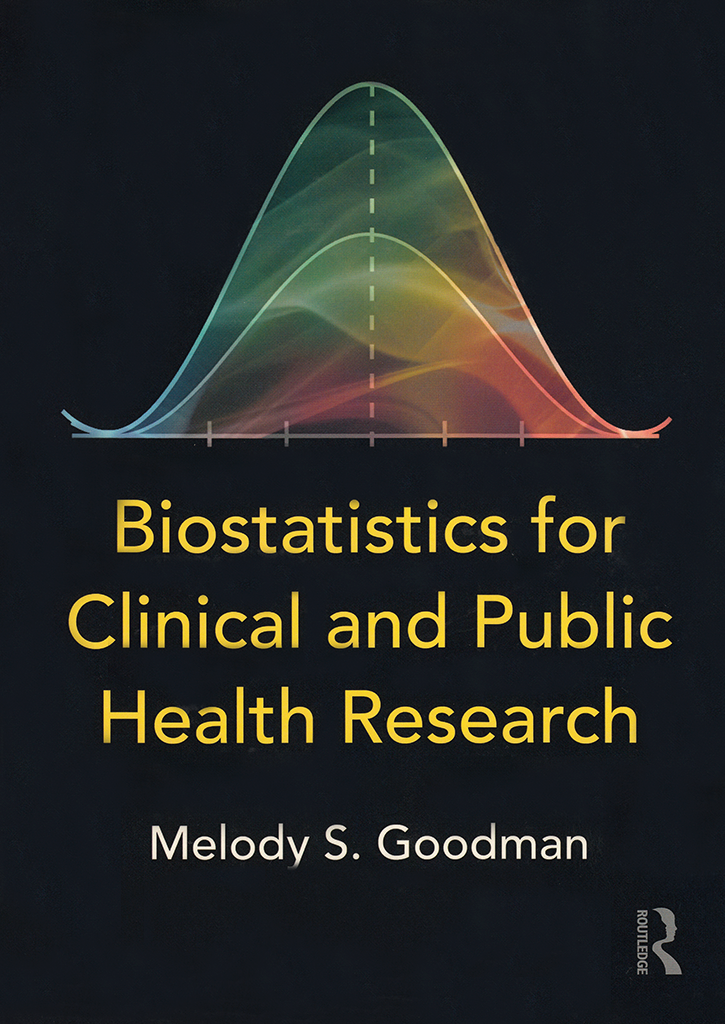

2025 Stata Conference • Nashville, TN • 31 July–01 August
Biostatistics for Clinical and Public Health Research |
||||||||||||||||||||||||||||||||
 Click to enlarge See the back cover |

As an Amazon Associate, StataCorp earns a small referral credit from
qualifying purchases made from affiliate links on our site.
eBook not available for this title
eBook not available for this title |
|
||||||||||||||||||||||||||||||
Comment from the Stata technical groupBiostatistics for Clinical and Public Health Research by Melody S. Goodman is an excellent guide for students and researchers in public health. Goodman lays a foundation of essential statistical knowledge, covering concepts such as probability distributions, hypothesis testing of continuous and categorical data, and measures of correlation. She discusses regression analysis and skillfully explains interpretation of coefficients, model selection and fit, and more. Goodman draws on her academic experience to present each topic, from descriptive statistics to survival analysis, with an easy-to-follow approach. Each chapter concludes with practice problems, allowing readers to test their comprehension. Both Stata and SAS are used in the book. Early in the book, Goodman provides an introduction to Stata. She also demonstrates the Stata commands for each type of analysis discussed. The interweaving of concepts, application, and statistical software makes this book an excellent companion for both researchers and students. |
||||||||||||||||||||||||||||||||
Table of contentsView table of contents >> Acknowledgments
Author
List of abbreviations
Introduction
1 Descriptive statistics
1.1 Terms
1.2 Introduction 1.3 Measures of central tendency (Measures of location) 1.4 Example of geometric mean using data from the 2014 National Health and Nutrition Examination Survey 1.5 Measures of spread 1.6 Measures of variability 1.7 Types of graphs 1.8 Outliers and standard distribution rules 1.9 References Lab A: Introduction to SAS®
Lab A: Introduction to Stata®
2 Probability
2.1 Terms
2.2 Introduction 2.3 Properties of probabilities 2.4 Laws of probability 2.5 Mutually exclusive and exhaustive 2.6 References 3 Diagnostic testing/screening
3.1 Terms
3.2 Introduction 3.3 Diagnostic terms and concepts 3.4 Reciever operating characteristic curves 3.5 References 4 Discrete probability distributions
4.1 Terms
4.2 Introduction 4.3 Examples of discrete random variables 4.4 Examples of continuous random variables 4.5 Measures of location and spread for random variables 4.6 Permutations and combinations 4.7 Binomial distribution 4.8 Poisson distribution 4.9 References 5 Continuous probability distributions
5.1 Terms
5.2 Introduction 5.3 Distribution functions 5.4 Normal distribution 5.5 Review of probability distributions 5.6 References Lab B: Probability distributions
6 Estimation
6.1 Terms
6.2 Introduction 6.3 Statistical inference 6.4 Sampling 6.5 Randomized clinical trials 6.6 Population and sample mean 6.7 Confidence intervals for means 6.8 Using the standard normal distribution for a mean 6.9 The t-distribution 6.10 Obtaining critical values in SAS and Stata 6.11 Sampling distribution for proportions 6.12 Confidence intervals for proportions 6.13 References 7 One-sample hypothesis testing
7.1 Terms
7.2 Introduction 7.3 Basics of hypothesis testing 7.4 Confidence intervals and hypothesis tests 7.5 Inference for proportions 7.6 Determining power and calculating sample size 7.7 References Lab C: One-sample hypothesis testing, power, and sample size
8 Two-sample hypothesis testing
8.1 Terms
8.2 Introduction 8.3 Dependent samples (paired tests) 8.4 Independent samples 8.5 Sample size and power for two-sample test of means 8.6 References 9 Nonparametric hypothesis testing
9.1 Terms
9.2 Introduction 9.3 Types of data 9.4 Parametric vs. nonparametric tests 9.5 References Lab D: Two-sample (parametric and nonparametric) hypothesis testing
10 Hypothesis testing with categorical data
10.1 Terms
10.2 Introduction 10.3 Two-sample test for proportions 10.4 References 11 Analysis of variance (ANOVA)
11.1 Terms
11.2 Introduction 11.3 Within- and between-group variation 11.4 ANOVA assumptions 11.5 Testing for significance 11.6 References 12 Correlation
12.1 Term
12.2 Introduction 12.3 Population correlation coefficient (ρ) 12.4 Pearson correlation coefficient (r) 12.5 Spearman rank correlation coefficient (rs) 12.6 References 13 Linear regression
13.1 Terms
13.2 Simple linear regression 13.3 Multiple linear regression 13.4 Other explanatory variables 13.5 Model selection 13.6 References 14 Logistic regression
14.1 Term
14.2 Introduction 14.3 Interpretation of coefficients 14.4 References 15 Survival analysis
15.1 Terms
15.2 Introduction 15.3 Comparing two survival functions 15.4 References Lab E: Data analysis project
Appendix: Statistical tables
Index
|
||||||||||||||||||||||||||||||||
Learn
Free webinars
NetCourses
Classroom and web training
Organizational training
Video tutorials
Third-party courses
Web resources
Teaching with Stata
© Copyright 1996–2025 StataCorp LLC. All rights reserved.
×
We use cookies to ensure that we give you the best experience on our website—to enhance site navigation, to analyze usage, and to assist in our marketing efforts. By continuing to use our site, you consent to the storing of cookies on your device and agree to delivery of content, including web fonts and JavaScript, from third party web services.
Cookie Settings
Last updated: 16 November 2022
StataCorp LLC (StataCorp) strives to provide our users with exceptional products and services. To do so, we must collect personal information from you. This information is necessary to conduct business with our existing and potential customers. We collect and use this information only where we may legally do so. This policy explains what personal information we collect, how we use it, and what rights you have to that information.
These cookies are essential for our website to function and do not store any personally identifiable information. These cookies cannot be disabled.
This website uses cookies to provide you with a better user experience. A cookie is a small piece of data our website stores on a site visitor's hard drive and accesses each time you visit so we can improve your access to our site, better understand how you use our site, and serve you content that may be of interest to you. For instance, we store a cookie when you log in to our shopping cart so that we can maintain your shopping cart should you not complete checkout. These cookies do not directly store your personal information, but they do support the ability to uniquely identify your internet browser and device.
Please note: Clearing your browser cookies at any time will undo preferences saved here. The option selected here will apply only to the device you are currently using.